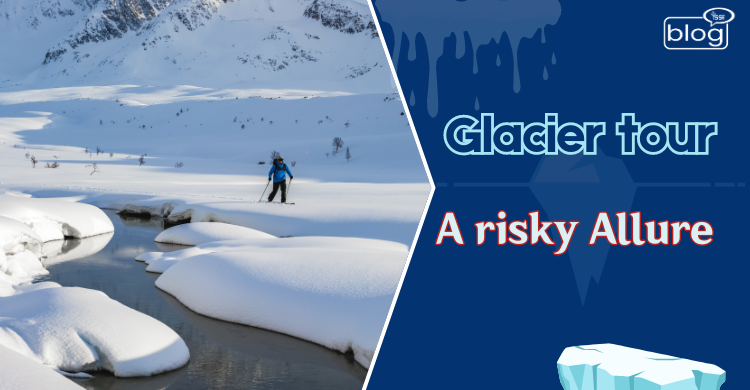Glacier is a name of wonder that everyone wants to explore, right? When we think of the word “Glacier”, a breathtaking view of a snowy or icy landscape flashes around our eyes. The moment we decide to explore the majestic beauty of the dreamy wonderland, we tend to plan certain things like destination, route, recreational activities, and so on. What most people forget to emphasize is the risk associated with this allure. This blog will mainly highlight the reason behind people’s desire to go on a glacier tour, what risks are associated with the tour, and what steps can be taken to mitigate the risk of falling into any accidents or injuries.
“Glacier tour” is a very well-known term for adventurous tourists. Iceland, Alaska, New Zealand, Canada, Greenland, and Switzerland are some of the leading glacier destinations for their eye-soothing glacier landscapes. These countries with famous glacier destinations have made it easier and more accessible for visitors to go there through a massive development in tourism infrastructure. Therefore, every year a growing number of tourists want to visit these glaciated regions. Here are some of the key reasons why people want to go on a glacier tour repeatedly.
Visitors want to witness the amazing form of ice formulation while they exist which is “The Last Chance Tourism” trend of not wanting to miss the beauty.
For an exhilarating outdoor experience, tourists can do several adventurous activities like glacier hiking, kayaking, and scenic drives around the icy surface which makes them thrilled.
An unquenchable thirst for exploring the ever-changing glacier landscape marvels the visitors and arouses their urge to explore the majestic beauty of the icy surface.
Tourists, being eager to broaden their horizon of practical knowledge and experience, can gain insights about glaciology, the ecological significance of glaciers, and climate change through the guide if they go on a hiking tour.
Glaciers not only attract visitors to have a glimpse of breathtaking beauty but also pose significant risks for those tourists who go into these highly challenging regions.
Risks associated with glacier tour
Possibility of Icefalls
The regions where ice is melting due to climate change are the red areas for tourists as there is a higher risk of being injured or falling into a crevasse by the huge chunks of ice. So, unstable ice formulation or falling ice heightens risks to tourists. Several unprecedented incidents have already occurred in the past, resulting in the deaths of many tourists. For example, two individuals in separate parts of a glacier in Alaska died due to the ice fall in the year 2023.
Sudden glacier floods
Due to the extensive melting of ice, glacial floods can occur. If the capacity of the glacial lakes exceeds the natural dam, there is a chance of sudden flood which in turn endangers the lives of the tourists.
Inexperienced tourists
Tourists must be well-prepared while going on a risky adventure like a glacier. Insufficient knowledge about safety methods, improper gears, and lack of fitness to do glacier activities can heighten the risk of encountering any accidents.
Unpredictable weather
Sudden storms, poor visibility, and temperature drops are prevalent in glacier areas as these areas are subject to rapidly changing weather conditions. Because of this unpredictability of nature, tourists sometimes fall into unprecedented accidents.
Crowding of Tourists
The likelihood of accidents or injuries rises when many tourists congregate in a limited glacier area, especially during the peak seasons.
Tourists can take some steps to avoid unprecedented accidents while being on a glacier tour. It is always best to be accompanied by qualified and professional tourist guides who can give essential insights, monitor safety, and ensure all the necessary things are taken to handle any risk.
Tourists need to carry enough water as well as energy-boosting snacks as they have to stay hydrated and nourished while doing any adventure activities;
Tourists can’t forget to wear layered clothes and safety gear including helmets, crampons, and harnesses.
Tourists must be alert to changes in glacier appearance and hazards like falling ice, sudden glacier floods, crevasses, and so forth.
The best time to hike is when the temperature is cooler; so visitors should avoid hiking during warmer periods.
It must not be forgotten that even if necessary precautions are taken, there is still a chance of accidents because of unpredictable weather conditions. So, tourists must be very careful while going on a glacier tour.
To read more blogs like this click here.
Writer
Taspia
Intern, Content Writing Department
YSSE.

